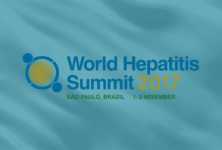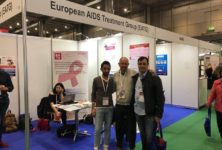When initiated and taken every day exactly as prescribed and directed, HIV treatment(ART) can greatly reduce the amount of HIV in the blood (viral load), allowing the immune system to begin the process of gradually repairing itself. As the use of ART continues, the amount of HIV in the blood eventually falls very low—below the level at which it can accurately be counted with routine tests. This low level is commonly called undetectable. Continued use of ART helps to keep HIV undetectable and makes a person’s risk of sexually transmitting HIV negligible. This effect of ART on a mass scale— at the level of a city, region or country—can have a tremendous impact on reducing the spread of HIV.
Thus ART has both a personal benefit (improved health) and societal benefit (reduced spread of HIV). These twin benefits of ART have inspired the Joint United Nations Programme on AIDS (UNAIDS) to set measureable goals to which cities, regions and countries can aspire in their quest to improve health and reduce the spread of HIV. UNAIDS encourages health authorities to try to achieve these goals, which go by the shorthand 90-90-90, by the year 2020:
- 90% of people living with HIV are aware of their infection
- 90% of people diagnosed with HIV are taking ART
- 90% of people taking ART have an undetectable viral load
If all of these goals are met by 2020, 73% of HIV-positive people in a city, region or country would have an undetectable viral load and therefore the risk of HIV transmission would be greatly reduced.
Mind the gap
The cascade of HIV care (also called the HIV treatment cascade or the HIV care continuum) involves the steps between receiving a positive test result and achieving and maintaining an undetectable viral load. Assessing the proportion of people at each step in the cascade is an essential part of the process of finding out how close a region is to meeting the UNAIDS 90-90-90 targets. Such an assessment may also provide the stimulus for an investigation to uncover any gaps or barriers within the cascade.
Scientists in France have recently noted that while the cascade of HIV care as it is currently envisaged is useful, it does not provide a complete picture of what is occurring in the continuum of care. They arrived at this conclusion because they found that the cascade “does not provide any information on the elapsed time between the different steps of the care continuum, and between becoming HIV-infected and reaching [an undetectable viral load].”
To underscore their point, the French scientists conducted extensive analyses to estimate the extent of France’s HIV epidemic, the distribution of people within the cascade of care, and delays moving from one part of the cascade to the next. They found that, overall, 52% of HIV-positive people on ART had an undetectable viral load. This figure is similar to what the Public Health Agency of Canada has estimated for Canada (54%).
However, the French scientists went beyond the usual analyses of the cascade. They found that there were significant delays moving from one step of the cascade to the next. Among gay and bisexual men and heterosexual women the gap between HIV infection and achieving an undetectable viral load was about six years. Among people who injected street drugs the gap was nearly 10 years.
The French analysis is striking in the type of gaps that it uncovered. It shows that more attention needs to be placed on the time people spend between each stage of the continuum of care. The gaps found in France are likely to exist elsewhere. Hopefully the French research will stimulate other countries, regions and cities to investigate the time that different populations spend at different points in the continuum. In the absence of such investigation (and subsequent interventions to shorten gaps in time), progress in achieving the 90-90-90 goals by 2020 may prove elusive.
Study details
Like their colleagues in other high-income countries, scientists in France regularly perform complex calculations and computer simulations, informed by information from HIV testing sites and other data, to estimate the size of that country’s HIV epidemic and its spread through different populations.
The French team has access to several databases that help them keep track of the spread of HIV and the passage of people through care and treatment. The main databases used were as follows:
- the general social insurance scheme
- the French Hospital Database
- the French HIV surveillance system
Results—Overall cascade of care
In 2010 there were an estimated 148,900 people living with HIV in France. Their distribution in the cascade was as follows:
- 81% were aware of their HIV diagnosis
- 75% were in care
- 61% were taking ART for more than six months
- 52% were virally suppressed
These figures are broadly similar to those from several other high-income countries.
Time between steps in the cascade
The French team was able to develop estimates of the length of time from when people became infected with HIV to subsequently having an HIV test. The researchers were able to do this because they had access to medical data collected from people, including data about the stage of HIV infection at which they were diagnosed. They included these estimates in their analysis of the cascade. Here are some key findings:
From infection to diagnosis and beyond
Gay and bisexual men and heterosexual women generally had the shortest time from infection to diagnosis—about three years. In contrast, heterosexual men spent the longest time in this stage—nearly five years.
Gay and bisexual men and heterosexual women had the shortest time from infection to viral suppression—almost six years. In contrast, people whose chief risk for HIV came from sharing equipment for injecting street drugs spent the longest time between acquiring HIV and eventually achieving viral suppression—almost 10 years.
Beyond the cascade as a metric
The French researchers found troubling gaps in the time spent between different steps of the cascade. Overall, they found that “it takes more than six years to reach viral suppression once HIV-infected, for 50% of individuals.”
Based on their findings, the researchers stated that simply uncovering the proportion of participants at each stage of the cascade “might not be the right tool to determine what kind of actions are required to accelerate access to ART and viral suppression, and thus to decrease the percentage of individuals at risk for HIV transmission.”
One source of delay
The French scientists found that “the time lost in achieving viral suppression was mainly due to delays in HIV testing (about three to four years).” However, among people who injected street drugs there were additional delays, mainly about entry into care once a diagnosis had been made.
Bear in mind
The study was based on data collected several years ago. More recent estimates about the distribution of people within France’s cascade of care, including the time spent between steps of the cascade, are being calculated. France’s model of uncovering time gaps spent between each step of the cascade of HIV care is something that other countries and regions need to explore and understand with their own data.
Other international researchers who study the cascade are calling for more meaningful studies. Such studies would not just assess the proportion of people at each major step but begin to take an in-depth investigation of the cascade. This approach would not only expand and improve our understanding of the continuum of care but would also uncover ways to overcome barriers and identify stages of the cascade where new funding needs to be applied to improve care and reduce the spread of HIV.
Fixing the gap
Another example of an area in need of improvement is access to HIV testing that is barrier-free and convenient for people. The French researchers noted that some people at high risk for HIV may not engage in HIV testing in a timely manner, so “innovative interventions are needed to increase testing opportunities” for them. The researchers stated that one possible innovation could be an emphasis on “self-testing programs…to shorten the time interval from infection to viral suppression.” Bear in mind that it is likely that several other interventions will be needed at different points in the cascade to make progress (such as improving care for people who inject street drugs). But making changes to the cascade so that it becomes more effective will be costly. Each intervention made (such as the proposed self-testing for HIV) needs to be assessed to determine if it is having an impact—and such assessments will take time. This means that the effort to reduce the spread of HIV and improve care is a long-term one and funding needs to be long-term as well.
In the absence of the resources to properly assess and improve the cascade of care, reaching the goals of 90-90-90 by the year 2020 may prove elusive even in some high-income countries.
Acknowledgement
We thank Virginie Supervie PhD, Institut Pierre Louis d’Epidémiologie et de Santé Publique, for helpful discussion, research assistance and expert review.
By Sean R. Hosein
REFERENCES:
- Supervie V, Marty L, Lacombe JM, et al. Looking beyond the cascade of HIV care to end the AIDS epidemic: Estimation of the time interval from HIV infection to viral suppression. Journal of Acquired Immune Deficiency Syndromes. 2016 Nov 1;73(3):348-355.
- Robb ML, Eller LA, Kibuuka H, et al. Prospective study of acute HIV-1 Infection in adults in East Africa and Thailand. New England Journal of Medicine. 2016 Jun 2;374(22):2120-30.
- Gillis J, Loutfy M, Bayoumi AM, et al. A multi-state model examining patterns of transitioning among states of engagement in care in HIV-positive individuals initiating combination antiretroviral therapy. Journal of Acquired Immune Deficiency Syndromes. 2016 Dec 15;73(5):531-539.
- Gisslén M, Svedhem V, Lindborg L, et al. Sweden, the first country to achieve the Joint United Nations Programme on HIV/AIDS (UNAIDS)/World Health Organization (WHO) 90-90-90 continuum of HIV care targets. HIV Medicine. 2017; in press.
- Colasanti J, Kelly J, Pennisi E, et al. Continuous retention and viral suppression provide further insights into the HIV care continuum compared to the Cross-sectional HIV care cascade. Clinical Infectious Diseases. 2016 Mar 1;62(5):648-54.
- Krentz HB, MacDonald J, John Gill M. High mortality among human immunodeficiency virus (HIV)-infected individuals before accessing or linking to HIV care: A missing outcome in the cascade of care? Open Forum Infectious Diseases. 2014 May 7;1(1):ofu011.
- Lourenço L, Colley G, Nosyk B, et al. High levels of heterogeneity in the HIV cascade of care across different population subgroups in British Columbia, Canada. PLoS One. 2014 Dec 26;9(12):e115277.


 ПОИСК ПО САЙТУ
ПОИСК ПО САЙТУ  поиск по ресурсному центру
поиск по ресурсному центру 



